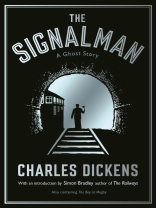On the 9th of June 1865, Charles Dickens was travelling aboard the Folkestone to London Boat Train with his mistress and her mother, when it derailed while crossing a viaduct near Staplehurst in Kent. The train plunged down a bank into a dry river bed, killing ten passengers, and badly wounding forty.
Dickens was profoundly affected by the disaster, and a year later, he published The Signalman, a supremely atmospheric ghost story in which the narrator, while investigating a dank and lonely railway cutting, meets the signalman who works there. His new acquaintance appears to live under the shadow of an unbearable secret, haunted by an apparition whose appearance prefigures terrible rail accidents.
Drawing on Dickens own experiences, and introduced by Simon Bradley, author of The Railways, The Signalman is both an important piece of rail history, and a sinister tale which will make you think twice next time you enter the quiet carriage.
Yazar hakkında
Charles Dickens was born on 7th February 1812 in Portsmouth and grew up in London and Kent. His father was sent to a debtor’s prison following financial difficulties and the young Dickens was sent temporarily to work in a boot blacking factory, until an inheritance allowed his return to school – however, he never forgot this formative experience. Dickens wrote many novels including A Tale of Two Cities, The Pickwick Papers, A Christmas Carol and Great Expectations. A leading celebrity of the Victorian Age, his short story The Signalman was likely based on a crash involving a train that Dickens was travelling on, with his mistress. Charles Dickens died in 1870.












